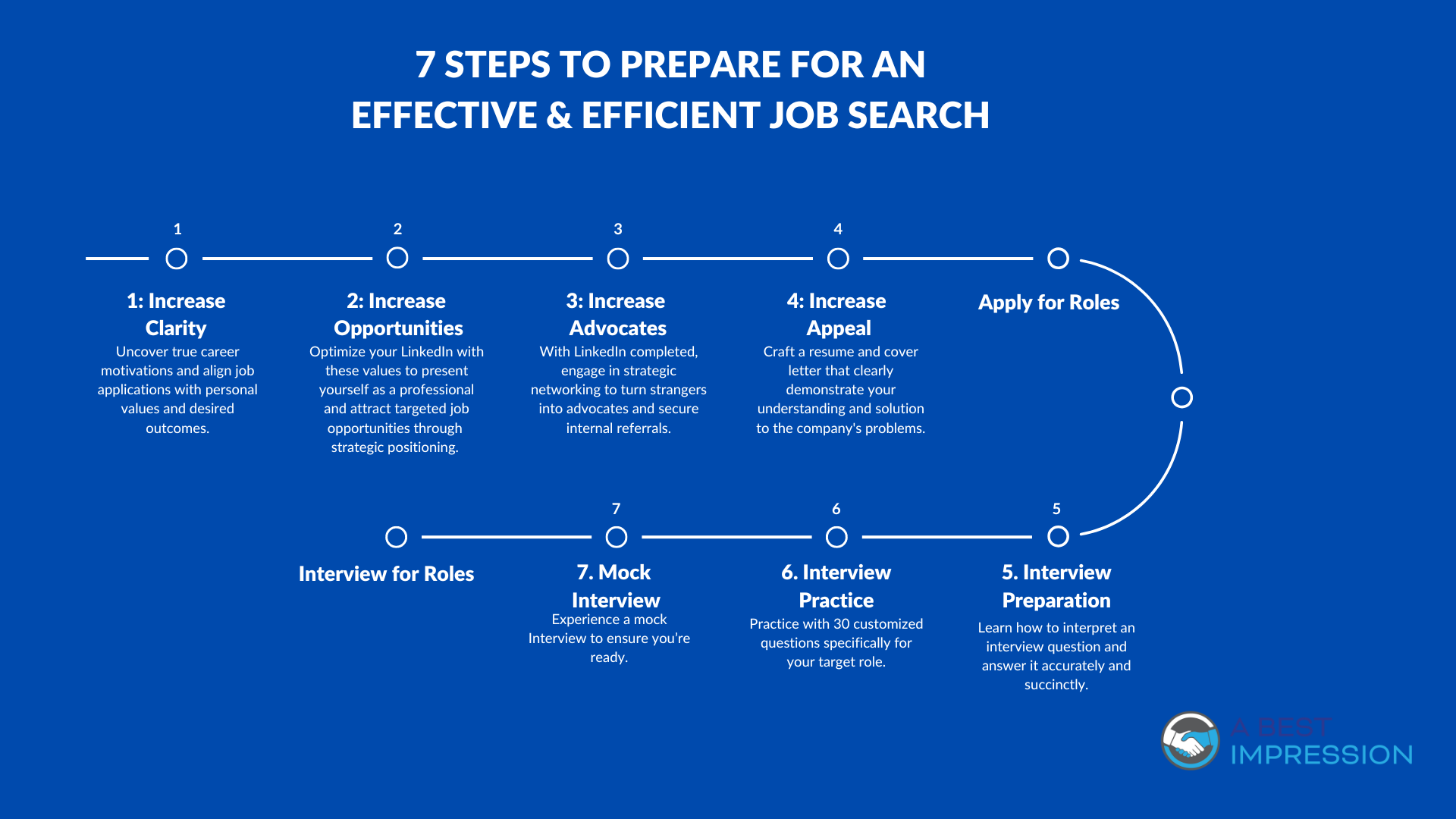
Job Search Tips: 7 Steps to Prepare for an Effective and Efficient Job Search
Looking for a new job is a challenge if you haven’t done it in a while. Indeed, job search is more complex than even a few years ago! There are many different job search websites and just as many job search opinions to balance. There are more elements, more moving parts, and you have to be aware of how each element impacts the rest. It’s a house of cards and all of the parts must stand strong. If one falls, they all fail. If you are thinking about starting a job search and aren’t sure where to start or what to do, follow these 7 Steps in order to prepare yourself for a job search that gets results and ensures the role is really what you want.
1. Get very clear on what you want, not just what you offer.
First, get hyper-targeted on what you want next. Consider if there’s opportunity to combine your professional skills with a personal interest. For example, you may be in digital marketing and in your free time volunteer for a pet rescue. Perhaps you could combine your two expertise and provide digital marketing services for an animal rescue. Determine if you need to work remotely, what kind of work environment in which you thrive, and figure out why exactly which problem a company hires you to solve for them.
2. LinkedIn Optimization
Second, use this information to overhaul your LinkedIn profile. This needs to accomplish three tasks:
1. it must demonstrate you are a professional who knows how to present a lot of information (years of work experience) into an easily scannable and consumable, curated list.
2. it must be optimized to show up in recruiter’s search results when they go looking for someone to solve their problems.
3. it must show up as high as possible in search results to increase the likelihood that you’ll be seen in those results.
By optimizing your profile this way, you increase opportunities to include the roles you find and apply for traditionally as well as the roles presented to you from recruiter outreach.
3. Strategic Networking
Third, it’s time to get a stranger in your corner who wants to help you find a job. Increasing Advocates is meant to provide two things:
1. Get your assumptions resolved. Consider all of the assumptions that you’re making about a company. There will likely be many! Determine which are most important for you to resolve. For example, if the role is listed as remote and that’s what you need, you may want to confirm that there are no internal plans to require in-office attendance in the next 6 months. If you enjoy sales and want that role, you may want to find out if the KPIs are reasonable by asking how many of the sales reps reach their quotas. Connect with the people who can answer those questions. For instance, at a large company, likely anyone could answer the question about in-office work, but you’d have to talk to someone in sales or an adjacent department to find out about the KPIs.
2. As you determine the company and role is a fit for you to thrive, pivot the conversation to indicate you’d like to use them as a referral for them to receive any internal referral bonus, if applicable. Check out this post to learn more about Increasing Advocates.
4. Writing a Strong Resume and Cover Letter
Fourth, now that you’ve confirmed the role is a fit and you have an internal referral, you have to output an executive-level resume and cover letter. Resume writing and drafting a compelling cover letter is important and doesn’t have to be difficult if you understand what to add. There is no need to spend your money on professional resume writing services, either. You should be able to do this yourself so you can confidently submit an application for a role within 24 hours. To make resume writing easy, you can write a targeted resume and cover letter using Walk the Walk Pro. It takes your resume writing from basic to executive-level and makes it easy to create the materials and keep track of your resumes in one place.
By completing these steps in this order, you’re prioritizing efficiency as these are designed to increase your efficiency and effectiveness so you are searching smarter.
Now it’s time to apply for jobs! So go for it! Get out there and submit resumes only for jobs that can provide what you need to thrive. If they can’t, be OK with it not being a match, regardless of the company name or mission. Otherwise you may find yourself feeling dissatisfied, undervalued, or not challenged and will want to begin this process again and move on, which is neither a good use of your time or the recruiters.
5. Interview Preparation
Now that you’ve found a job and applied, immediately move into the interview preparation. After all, it is not a good use of your time to work hard to land the interview if you can’t stick the landing. Dedicating time to practice is crucial here. Use GPT to create a list of mock interview questions, specifically behavioral types, and learn the STAR format — it’s still very much a reliable structure to keep your answers on topic and succinct. I recommend practicing the STAR format with everyday behavioral questions, like ‘tell me about a time when your travel plans didn’t work out as planned’ or ‘tell me about a time you had to plan a birthday party.’ Then move onto the same types of questions but for the specific job description. Lastly, have an experienced person conduct a mock interview so they can provide feedback to help iron out any red flags that may see that you don’t.
